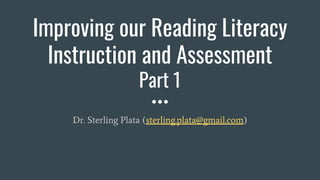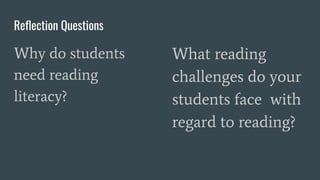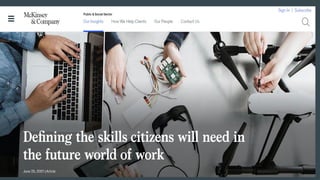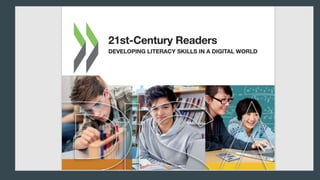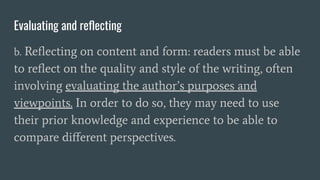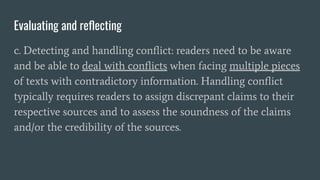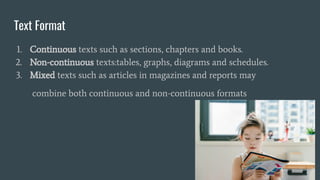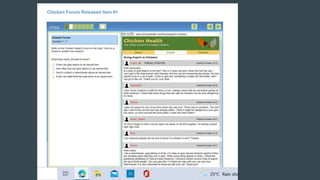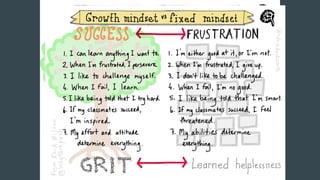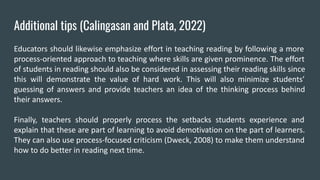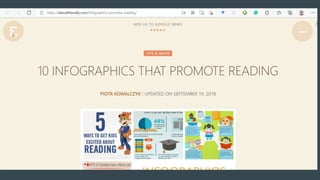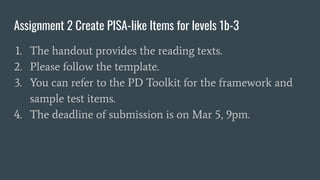This document discusses improving reading literacy instruction and assessment. It begins with an introduction and learning outcomes. It then discusses changes in the nature of reading literacy due to evolving technologies. Next, it defines reading literacy according to PISA and discusses its framework, including proficiency levels from 1b to 3. It provides sample test items for different levels. It also discusses evidence-based practices for struggling adolescent readers, including emphasizing effort and growth mindset. Finally, it discusses improving reading motivation through SDGs and varying text types and formats.
